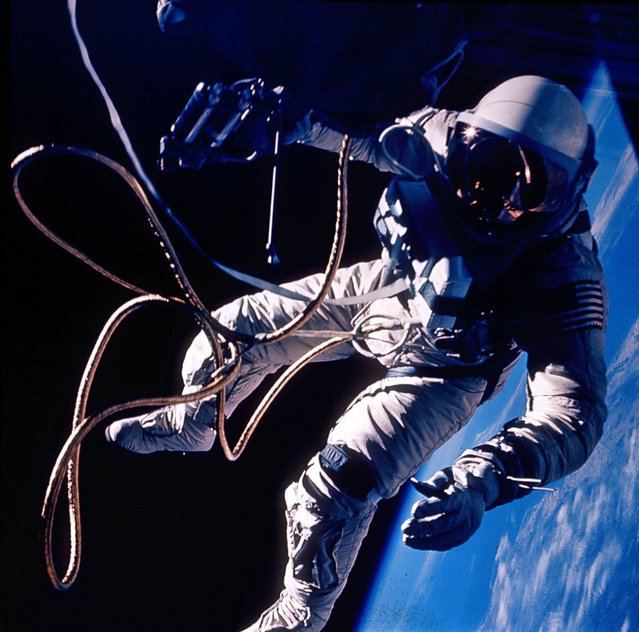
The First U.S. Spacewalk – Gemini 4 Ed White made the United States' first spacewalk on June 3, 1965 during the Gemini 4 mission. The extra-vehicular activity (EVA) started at 19:45 UT (3:45 p.m. EDT) on the third orbit when White opened his hatch and used the hand-held manuevering oxygen-jet gun to push himself out of the capsule. (Photo by NASA)
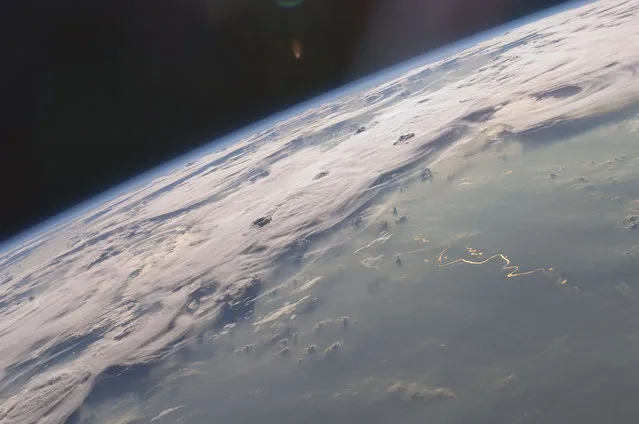
A picturesque line of thunderstorms and numerous circular cloud patterns filled the view as the International Space Station (ISS) Expedition 20 crew members looked out at the limb (blue line on the horizon) of the Earth. The region shown in the astronaut photograph (top image) includes an unstable, active atmosphere forming a large area of cumulonimbus clouds in various stages of development. The crew was looking west-southwest from the Amazon Basin, along the Rio Madeira toward Bolivia when the image was taken. The semi-circular cloud patterns near the center of the astronaut photograph may be detected in a Geostationary Operational Environmental Satellite (GOES) infrared satellite image of the region (bottom image, yellow rectangle) acquired about 20 minutes earlier than the astronaut photograph. The distinctive circular patterns of the clouds in the astronaut photograph are likely caused by the aging of thunderstorms. Such ring structures often form during the final stages of storms’ development as their centers collapse. (Photo by NASA)
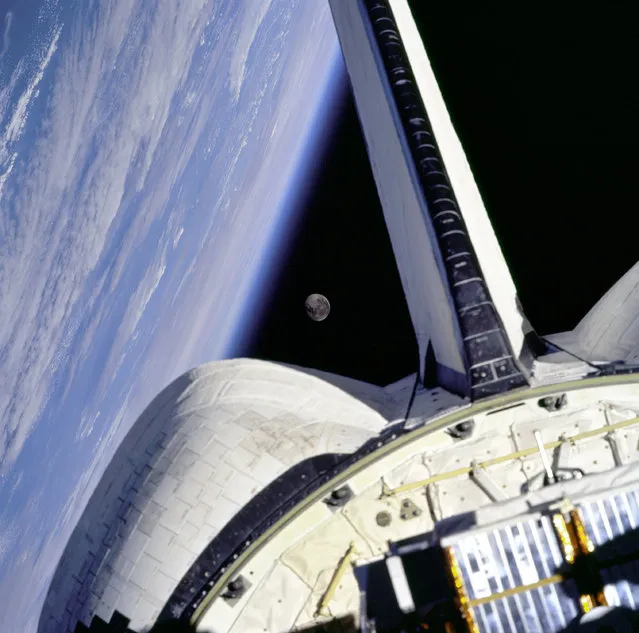
Earth and its moon are nicely framed in this image taken from the aft windows of the Space Shuttle Discovery in 1998. (Photo by NASA)
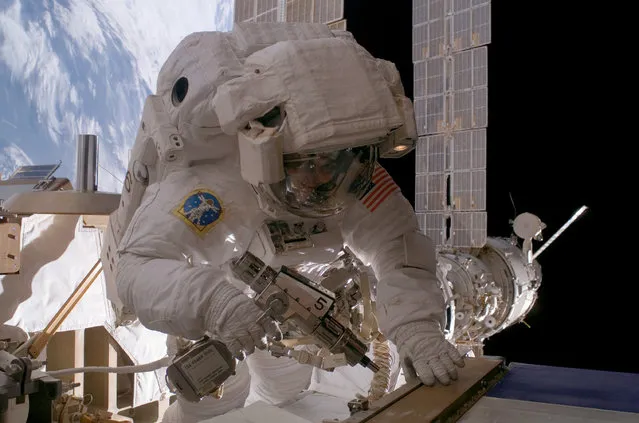
Astronaut Sunita L. Williams, Expedition 14 flight engineer, used a pistol grip tool as she worked on the International Space Station in the first of three spacewalks slated to occur over a nine-day period, January 31, 2007. (Photo by NASA)
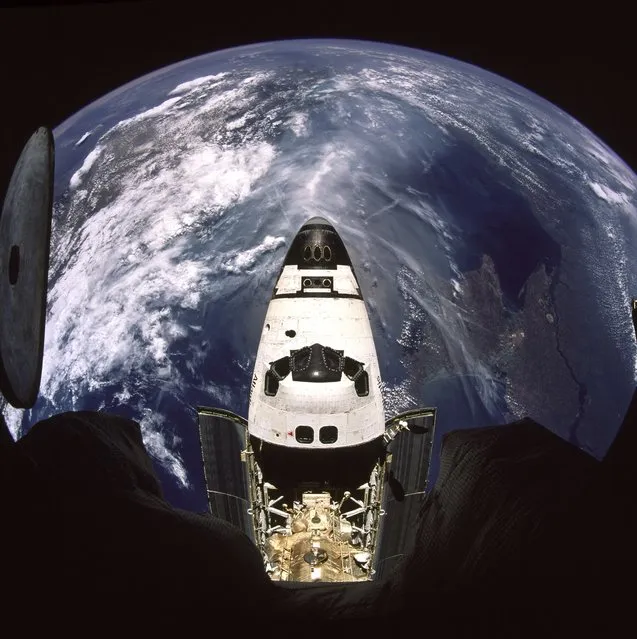
Beautiful Earth and NASA's Space Shuttle Atlantis (STS-71), July 2, 1995, as seen from the Russian Federation “Mir” Space Station. (Photo by NASA)
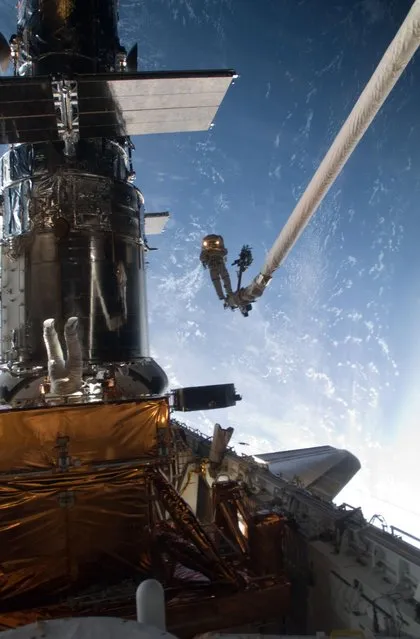
Mission Specialist John Grunsfeld is positioned on a foot restraint on the end of Atlantis' remote manipulator system and Andrew Feustel (top center), mission specialist, participate in the mission's fifth and final spacewalk, May 20, 2009. (Photo by NASA)
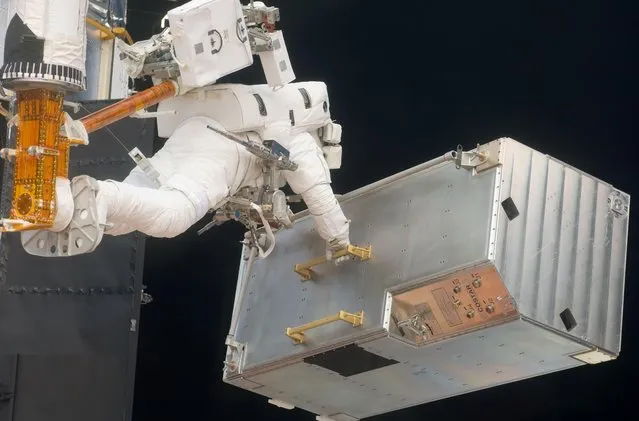
A picturesque line of thunderstorms and numerous circular cloud patterns filled the view as the International Space Station (ISS) Expedition 20 crew members looked out at the limb of the Earth. The crew was looking west-southwest from the Amazon Basin, along the Rio Madeira toward Bolivia when the image was taken, October 6, 2009. (Photo by NASA)
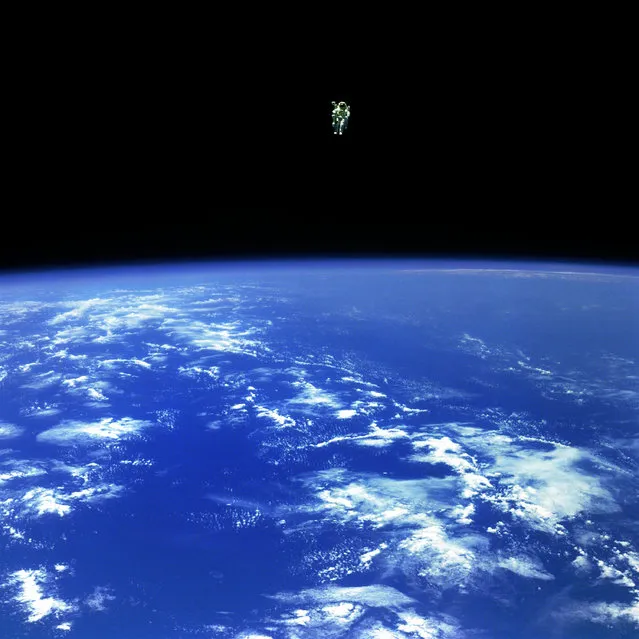
Mission Specialist Bruce McCandless II, is seen further away from the confines and safety of his ship than any previous astronaut has ever been. This space first was made possible by the Manned Manuevering Unit or MMU, a nitrogen jet propelled backpack. After a series of test maneuvers inside and above Challenger's payload bay, McCandless went “free-flying” to a distance of 320 feet away from the Orbiter. This stunning orbital panorama view shows McCandless out there amongst the black and blue of Earth and space. (Photo by NASA)
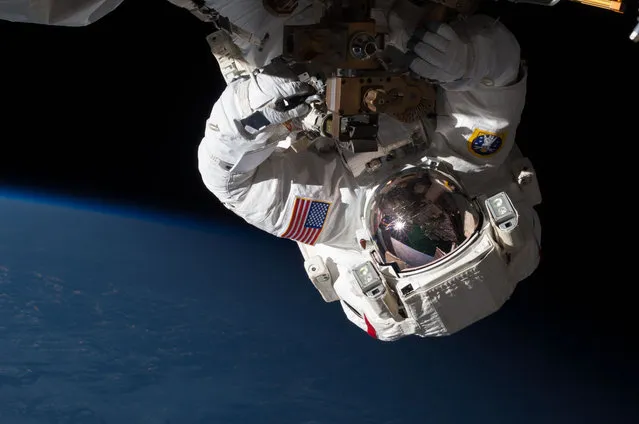
Expedition 35 Flight Engineers Chris Cassidy (pictured) and Tom Marshburn (out of frame) completed a spacewalk to inspect and replace a pump controller box on the International Space Station’s far port truss (P6) leaking ammonia coolant, May 11, 2013. (Photo by NASA)
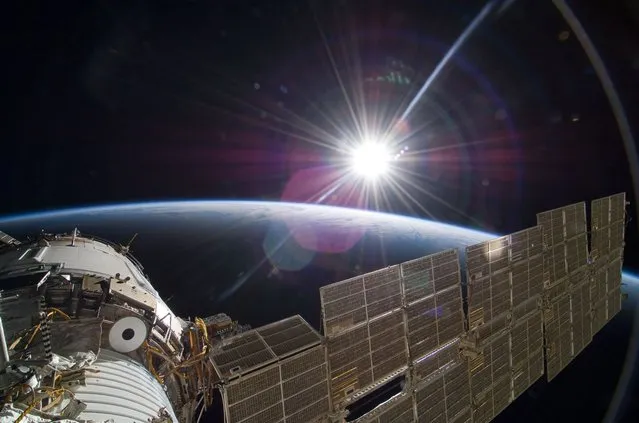
The bright sun greets the International Space Station in this November 22, 2009 scene from the Russian section of the orbital outpost, photographed by one of the STS-129 crew members. (Photo by NASA)
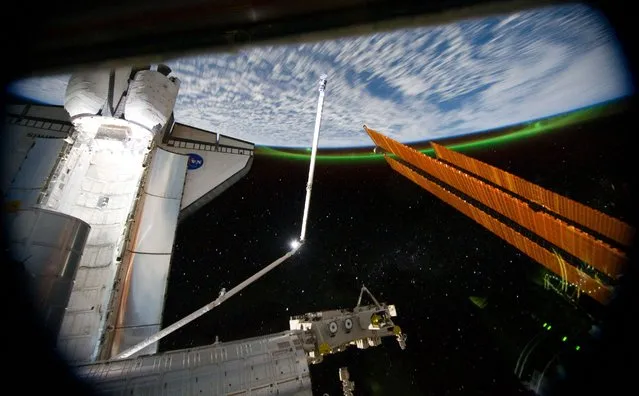
A panoramic view, photographed from the International Space Station, looking past the docked space shuttle Atlantis' cargo bay and part of the station including a solar array panel toward Earth, July 14, 2011. (Photo by NASA)
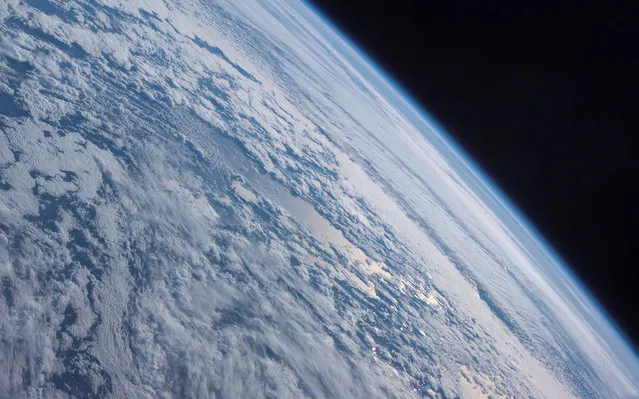
Earth's horizon against the blackness of space is featured in this image photographed by an Expedition 7 crewmember onboard the International Space Station (ISS), October 4, 2003. (Photo by NASA)
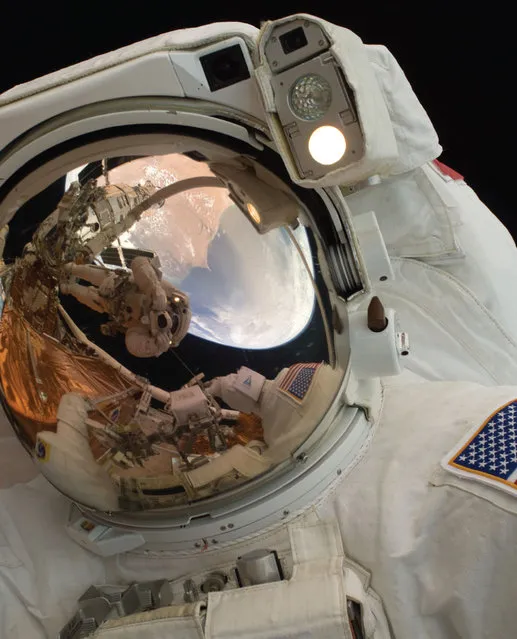
A close-up of Astronaut John Grunsfeld shows the reflection of Astronaut Andrew Feustel, perched on the robotic arm and taking the photo. The pair teamed together on three of the five spacewalks during Servicing Mission 4 in May 2009. (Photo by NASA)
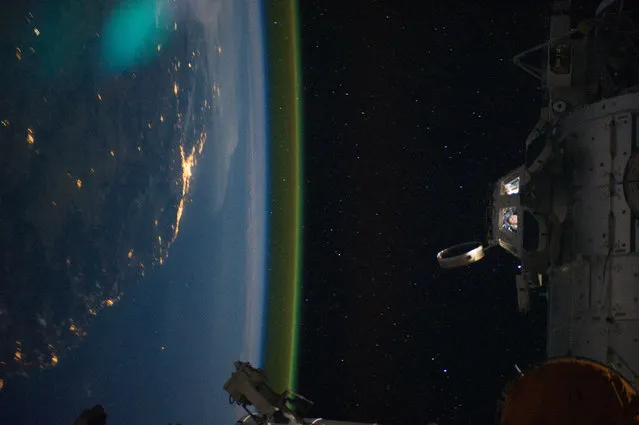
This unique photographic angle, featuring the International Space Station's Cupola and crew activity inside it, other hardware belonging to the station, city lights on Earth and airglow was captured by one of the Expedition 28 crew members. The major urban area on the coast is Brisbane, Australia. The station was passing over an area southwest of Canberra, September 15, 2011. (Photo by NASA)
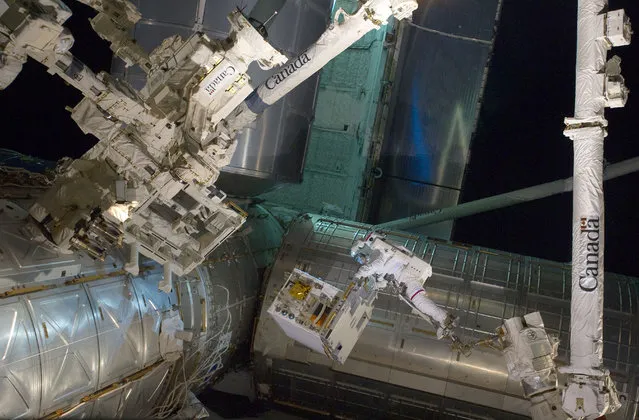
With his feet secured on a restraint on the space station remote manipulator system's robotic arm or Canadarm2, NASA astronaut Mike Fossum (frame center) holds the Robotics Refueling Mission payload, which was the focus of one of the primary chores accomplished on a six and a half hour spacewalk on July 12, 2011. The failed pump module is with DEXTRE on left side of the photo. NASA astronauts Fossum and Ron Garan performed the six-hour, 31-minute spacewalk, which represents the final scheduled extravehicular activity during shuttle missions. (Photo by NASA)
11 Apr 2014 08:40:00,
post received
0 comments
